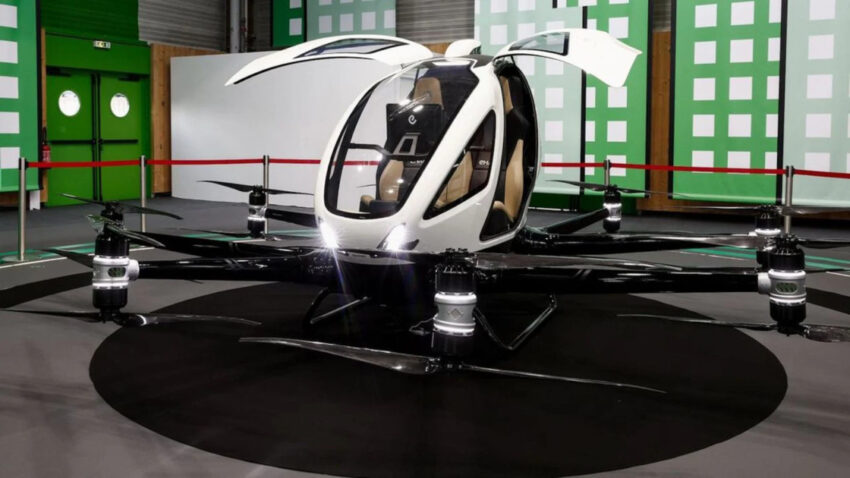Monday, September 16, 2024 Roelof-Jan “RJ” Steenstra, the CEO of PortsToronto, envisions a transformative future for Toronto’s air travel, particularly with Billy Bishop Toronto City Airport playing a key role in the city’s growth. PortsToronto, which oversees Billy Bishop, the Port of Toronto, and the Outer Harbour Marina, sees itself as a “city builder,” driving economic growth and serving the evolving transportation needs of Toronto. Steenstra, who took over in 2022, brings a reputation as a reformer of small airports, having successfully revitalized both Red Deer and Fort McMurray airports before joining PortsToronto.
Billy Bishop, which is Toronto’s oldest airport, is expected to be a critical part of the city’s future transportation network. The airport, along with its sister entities, the Port of Toronto and the Outer Harbour Marina, will shape how people and goods move in the city. In a discussion with The Star , Steenstra outlined his vision for the future of air travel in Toronto, including the possibility of flying taxis and passenger drones, which could revolutionize urban transportation.

Steenstra’s Journey in Aviation Steenstra’s interest in aviation began early, inspired by his father, who was a pilot for Pacific Western Airlines. Although his initial career path didn’t focus on aviation, Steenstra eventually transitioned into the industry in his mid-30s after a varied career in anthropology, communications, and teaching. He earned an MBA, and in 2011, took the role of CEO at Red Deer Airport Authority, where he transformed an underutilized airport into a regional commuter hub.
His next major challenge came in 2016 when he was appointed to lead the Fort McMurray Airport Authority after wildfires devastated the region. Under his leadership, the airport played a vital role in the community’s recovery, helping the area rebuild in the aftermath of the disaster. These experiences of transformation prepared Steenstra for his current role at PortsToronto, where his leadership is focused on revitalizing Billy Bishop Airport and positioning it as a hub for future transportation needs.
Billy Bishop’s Role as a “City Builder” Steenstra sees Billy Bishop as more than just an airport. He believes it can serve as an economic engine and a key component of Toronto’s future. The airport, which is the ninth busiest in Canada by passenger volume, is poised to play a larger role as Toronto’s population grows and its transportation needs evolve.
PortsToronto’s other entities, the Port of Toronto and the Outer Harbour Marina, also contribute to the city’s economy by facilitating trade, tourism, and recreation. According to Steenstra, PortsToronto is looking to the future by exploring how air, land, and sea transportation can be integrated. One major development on the horizon for Billy Bishop is the introduction of a U.
S. preclearance facility in 2025. This new facility will expand the airport’s reach, allowing flights to serve more U.
S. destinations, increasing from around 70 to nearly 280 cities. This will significantly benefit U.
S.-bound passengers and boost the airport’s connectivity. Technological Advancements: The Future of Air Travel The discussion around Billy Bishop’s future has shifted from whether jets will be allowed to how new technologies, such as electric aircraft and vertical takeoff and landing vehicles (VTOLs), will shape the airport’s role in urban transportation.
As many global cities explore using flying taxis and passenger drones to relieve traffic congestion, Steenstra believes Billy Bishop is well-positioned to be part of this evolving landscape. Electric VTOLs, which are currently under development, offer a cleaner and quieter alternative to traditional aircraft. However, the airport operates under an agreement established in 1983, which restricts the types of aircraft that can use the facility.
PortsToronto is re-evaluating this agreement to ensure the airport can adapt to modern technological advancements. The goal is to ensure that Billy Bishop meets the future needs of Toronto while enabling a cleaner and quieter environment. Impact on the Travel Industry The future of Billy Bishop and Toronto’s air travel could redefine how people move within the city and beyond.
The airport’s capacity to adapt to new technologies and expand its international reach will make it an essential part of the travel industry, not only in Canada but globally. Global Effects on Travelers The innovations at Billy Bishop Airport, particularly the introduction of electric aircraft and the expansion of U.S.
preclearance, will have a global impact on travelers. For international passengers, the airport’s enhanced connectivity to the U.S.
will offer more efficient travel routes. Moreover, the adoption of flying taxis and passenger drones in Toronto could set a precedent for urban air mobility in other major cities worldwide. As urban areas become increasingly congested, travelers may look to Toronto as a model for how modern cities can integrate new air travel technologies to solve transportation challenges.
The potential introduction of flying taxis and passenger drones could also attract a new demographic of travelers seeking faster and more convenient urban transport solutions. As this technology develops, it could reshape how global travelers plan their journeys, especially within city centers..



















